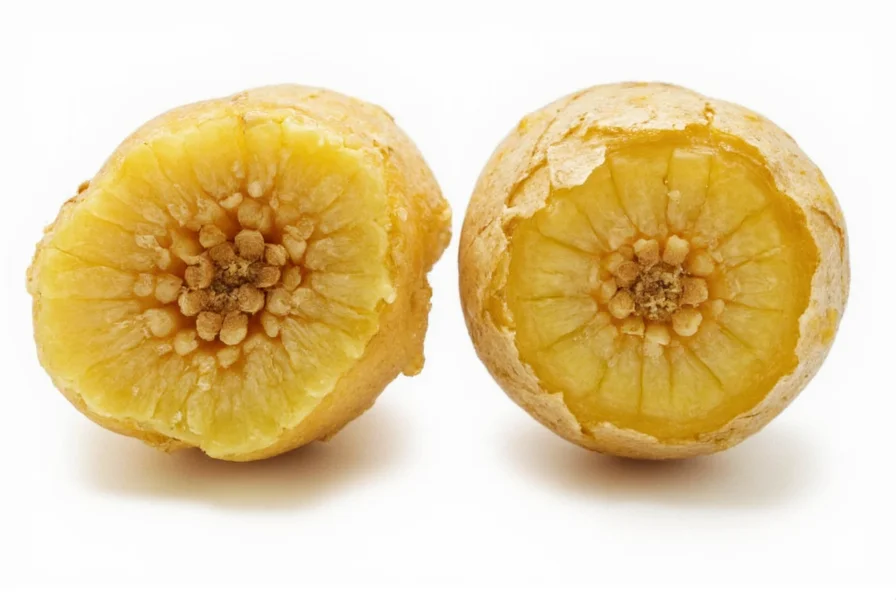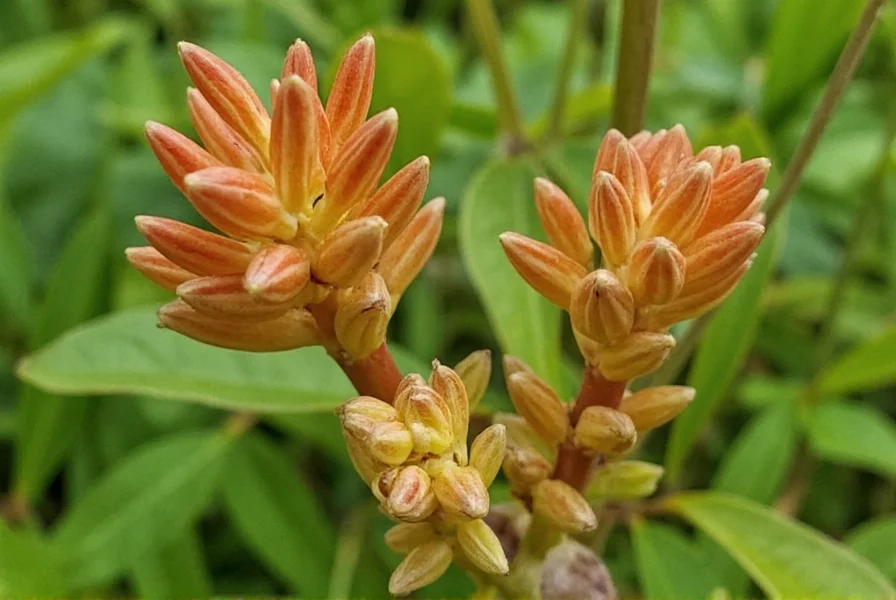Many gardeners and foragers confuse European wild ginger with the culinary ginger used in cooking, but these plants belong to completely different botanical families with significant differences in safety and usage. Understanding these distinctions is crucial for both garden planning and foraging safety.
Botanical Profile of Asarum europaeum
European wild ginger, scientifically known as Asarum europaeum, is a low-growing perennial plant in the birthwort family (Aristolochiaceae). Despite its common name, it shares no relation to the ginger family (Zingiberaceae) that produces the culinary spice. This confusion stems from the similar aroma of its rhizomes, which early European settlers noted resembled ginger when crushed.
The plant features kidney-shaped, evergreen leaves that grow 5-10 cm across, forming dense mats in shaded woodland environments. Its distinctive maroon-brown flowers appear in spring, nestled close to the ground beneath the foliage. Unlike true ginger, which grows tropical rhizomes above ground, European wild ginger develops shallow, creeping rhizomes just below the soil surface.
Natural Habitat and Distribution
Native across much of central and eastern Europe, Asarum europaeum thrives in deciduous forests with rich, moist soils. It's particularly common in beech and oak woodlands from France to western Russia. The plant prefers partial to full shade and consistently moist, humus-rich soil with good drainage.
| Characteristic | European Wild Ginger | True Culinary Ginger |
|---|---|---|
| Scientific Name | Asarum europaeum | Zingiber officinale |
| Family | Aristolochiaceae | Zingiberaceae |
| Native Region | Europe | Southeast Asia |
| Edibility | Not edible (toxic) | Edible rhizomes |
| Hardiness Zone | 4-8 | 8-12 (as perennial) |
Gardening Applications and Care Requirements
Gardeners value European wild ginger primarily as an attractive, low-maintenance ground cover for challenging shaded areas where few plants thrive. Its evergreen nature provides year-round interest in temperate climates, making it particularly useful for:
- Woodland garden settings
- Shaded slopes where erosion control is needed
- Understory planting beneath trees and shrubs
- Creating natural-looking garden borders
When establishing Asarum europaeum in gardens, proper planting conditions are essential for success. Space plants 6-12 inches apart in prepared soil amended with organic matter. The plants spread slowly via rhizomes, typically covering a 12-18 inch diameter area within three years. While drought-tolerant once established, they perform best with consistent moisture during dry periods.
Safety Concerns and Misconceptions
The most critical aspect of European wild ginger knowledge involves safety. Despite historical folk medicine uses, modern research confirms Asarum europaeum contains aristolochic acids, compounds now recognized as potentially carcinogenic and nephrotoxic (kidney-damaging). This makes the plant unsafe for internal medicinal use.
Several dangerous misconceptions persist about european wild ginger identification and usage:
- Myth: It can be used as a substitute for culinary ginger in cooking
Fact: It contains toxic compounds and should never be consumed - Myth: All plants with "ginger" in their name are edible
Fact: Common names can be misleading; botanical classification determines safety - Myth: Traditional use proves safety
Fact: Historical usage doesn't guarantee safety; modern toxicology reveals risks
Identification Tips for Foragers and Gardeners
Correct identification of european wild ginger vs true ginger is essential. Key distinguishing features include:
- Leaf arrangement: European wild ginger has solitary, kidney-shaped leaves on individual stalks, while true ginger has alternate leaves growing along upright stems
- Flower structure: Asarum europaeum produces distinctive maroon, jug-shaped flowers close to the ground, unlike true ginger's showy tropical blooms
- Rhizome appearance: European wild ginger has thin, creeping rhizomes with a ginger-like aroma but different chemical composition
- Growth habit: It forms dense ground-hugging mats rather than the upright clumps of culinary ginger
For those interested in european wild ginger look alikes, be particularly cautious of other Asarum species and potentially toxic plants that might grow in similar woodland environments. When in doubt, consult a qualified botanist before handling or using any wild plant.
Ecosystem Benefits and Considerations
While not suitable for consumption, European wild ginger provides valuable ecological functions in appropriate settings. Its dense foliage creates habitat for beneficial insects and helps stabilize soil on shaded slopes. The plant serves as a host for certain butterfly species, including the ginger scallopwing (Cephrenes augiades), though this relationship is more prominent with North American Asarum species.
Gardeners should note that while Asarum europaeum is generally well-behaved in gardens, it can spread slowly over time. In some regions outside its native range, monitoring is recommended to ensure it doesn't become invasive in natural areas.

Historical Context and Modern Understanding
Historically, european wild ginger medicinal uses included treatments for respiratory conditions and as a topical antiseptic. However, modern toxicology has revealed significant health risks associated with aristolochic acids present in the plant. These compounds can cause irreversible kidney damage and increase cancer risk, leading health authorities to warn against internal use of any Asarum species.
Current research focuses on understanding the ecological role of these compounds rather than medicinal applications. The plant's persistence in European woodlands suggests these chemicals serve as natural defenses against herbivores and pathogens in its native ecosystem.
Practical Gardening Recommendations
For gardeners interested in growing european wild ginger as a ground cover, consider these practical tips:
- Plant in early spring or fall when temperatures are moderate
- Prepare soil with generous amounts of leaf mold or compost
- Water regularly during the first growing season
- Pair with companion plants like ferns, hostas, and trilliums
- Expect slow establishment but long-term persistence once established
- Divide clumps every 3-4 years to maintain vigor
Remember that patience is required with this plant—it may take two growing seasons to form a dense, attractive mat. Unlike more aggressive ground covers, european wild ginger grows slowly but steadily, creating a beautiful, natural-looking woodland floor over time.
Conclusion
European wild ginger serves as an excellent example of why common names can be misleading in botany. While its name suggests a relationship to culinary ginger, Asarum europaeum is a distinct plant with important safety considerations. Gardeners can appreciate its beauty as a shade-tolerant ground cover, but foragers must exercise extreme caution—this plant should never be consumed.
Understanding the differences between european wild ginger vs true ginger protects both your health and helps preserve accurate botanical knowledge. When working with any plant, especially those with historical medicinal uses, consulting current scientific research is essential for safe and informed decisions.
Is European wild ginger edible?
No, European wild ginger (Asarum europaeum) is not edible. It contains aristolochic acids which can be toxic when ingested, potentially causing kidney damage and increasing cancer risk. Despite its name and historical folk medicine uses, it should never be consumed or used as a substitute for culinary ginger.
What's the difference between European wild ginger and true ginger?
European wild ginger (Asarum europaeum) belongs to the Aristolochiaceae family and is native to European woodlands, while true ginger (Zingiber officinale) is in the Zingiberaceae family and originates from Southeast Asia. They have different growth habits, flower structures, and most importantly, true ginger rhizomes are edible while European wild ginger contains toxic compounds.
Can I grow European wild ginger in my garden?
Yes, European wild ginger makes an excellent shade-tolerant ground cover for woodland gardens in USDA zones 4-8. It prefers moist, humus-rich soil in partial to full shade. Space plants 6-12 inches apart and water regularly during establishment. It spreads slowly via rhizomes and forms attractive evergreen mats that help control erosion in shaded areas.
How do I identify European wild ginger correctly?
European wild ginger has solitary, kidney-shaped evergreen leaves on individual stalks, maroon jug-shaped flowers close to the ground, and thin creeping rhizomes with a ginger-like aroma. It grows in dense mats in woodland settings. Key identification features include the leaf shape, ground-level flowers, and growth habit. Always consult multiple identification resources or a botanist when learning european wild ginger identification to avoid confusion with similar plants.
Are there any safe uses for European wild ginger?
European wild ginger has safe ornamental uses as a shade-tolerant ground cover in gardens, but should not be used internally. Some historical topical applications existed in folk medicine, but modern research suggests caution even with external use due to potential skin absorption of toxic compounds. The primary safe use today is as an attractive, low-maintenance garden plant for shaded areas.











 浙公网安备
33010002000092号
浙公网安备
33010002000092号 浙B2-20120091-4
浙B2-20120091-4